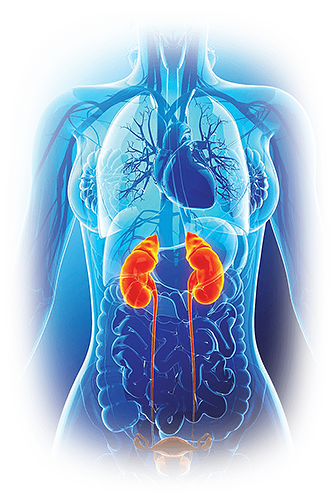Login
For Clinician Providers
For Clinician Providers
For Patients
Overview Of Prostate Cancer And Major Prostate Screening Tests
Prostate is a small gland in human males, around the size of a walnut. It is located in front of the rectum and right under the bladder. Urethra, a narrow tube that empties urine from the body runs through the middle of the prostate and carries both semen and urine out of the body.
Function of Prostate Gland
The function of the prostate is to secrete enzymes like PSA. This enzyme is the substance that helps sperm cells to loosen up and reach the egg, which is important for reproduction.
What is prostate cancer?
It is an uncontrolled growth of cells in the prostate gland. It is the second most common type of cancer in the United States, next only to skin cancer. It is so common that in every 3.3 minutes, a man is diagnosed with prostate cancer and every twenty minutes, a man dies from it.
Although it is fatal, if detected at the earlier stages, it is nearly 100% treatable. Prostate cancer does not have any clear symptoms and hence, it can be difficult to detect without thorough medical diagnostics.
As the gland surrounds the urethra, the common symptoms that are visible include symptoms associated with urinary dysfunction such as frequent urination, increased urination at night, difficulty in starting and maintaining a steady stream, painful urination and blood in the urine (hematuria).
Stacy Loeb, a Urologist from New York University says, “All men should get a baseline PSA in their forties”. This is an important advice, especially when you have a family history or are of African-American descent.
Major Prostate Cancer Screening procedures
Prostate cancer can grow very slowly, but it can also grow at a high rate in which case it can be fatal. The screening tests available as of now can only detect cancer and not its rate of growth. This is the reason why early diagnosis and treatment is important.
The common screening methods that are used for diagnosis of prostate cancer includes –
- Prostate-specific antigen (PSA) test: This test measures the level of PSA in the blood. Higher than average levels of PSA indicates higher risks of having prostate cancer. PSA levels of 4 to 10 nanograms per milliliters are considered suspicious and a repeat test can be advised.
- DRE or Digital rectal exam: It is an examination done by a doctor or a nurse by inserting a glove into the rectum of the patient to feel any lump or abnormalities which could indicate enlargement of prostate gland.
- Biopsy: It is a procedure in which several hollow-core needles are inserted into the prostate gland through the rectum to obtain tissue samples. The samples are then tested in a laboratory for cancer cells.
- Prostate Health Index (phi): It is the newest blood test which results in a score that is three times more accurate than the PSA test. It comprises of the following three tests:
- PSA
- Free PSA
- p2PSA
The phi is a mathematical formula that combines the results of the above tests. The score so obtained has been shown to outperform its individual components. This test has resulted in reducing negative findings of the PSA and DRE examinations.
- Prostate Cancer Antigen 3 (PCA3 or DD3) urine test: It is a biomarker that is collected from the urine sample of the patient after a prostate massage with digital rectal examination. This test is useful in measuring malignancy in men undergoing repeated biopsies.
These tests are the major prostate-specific tests available. There are many other oncological tests which can be carried out as per the recommendations of the doctor. You can click on accureference.com for any of the above-mentioned diagnostic and screening tests.



